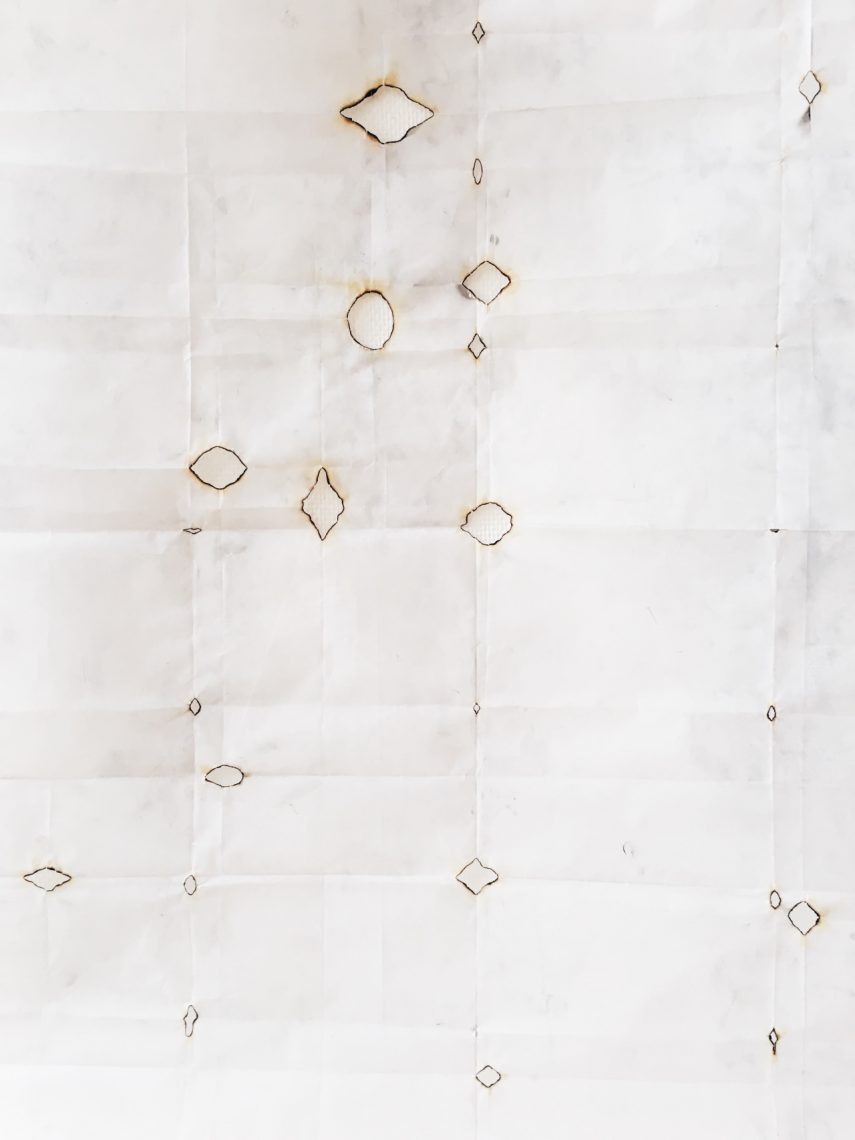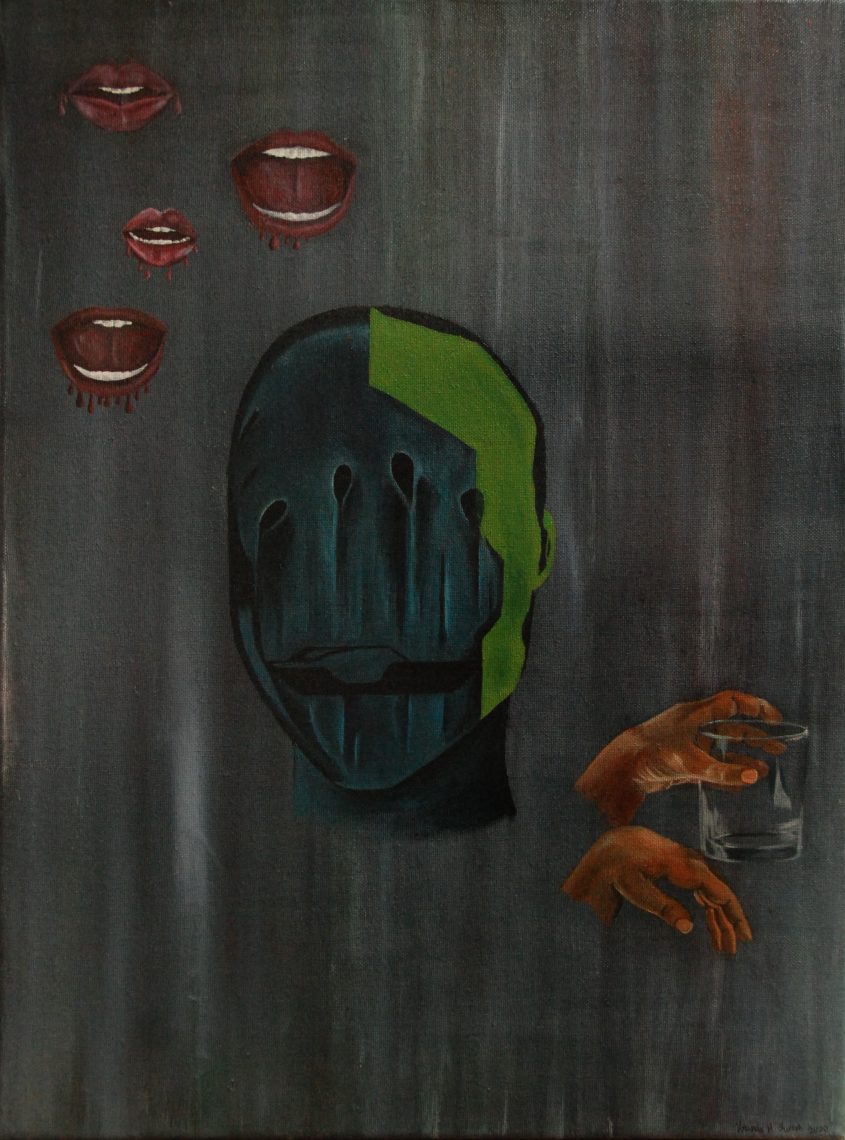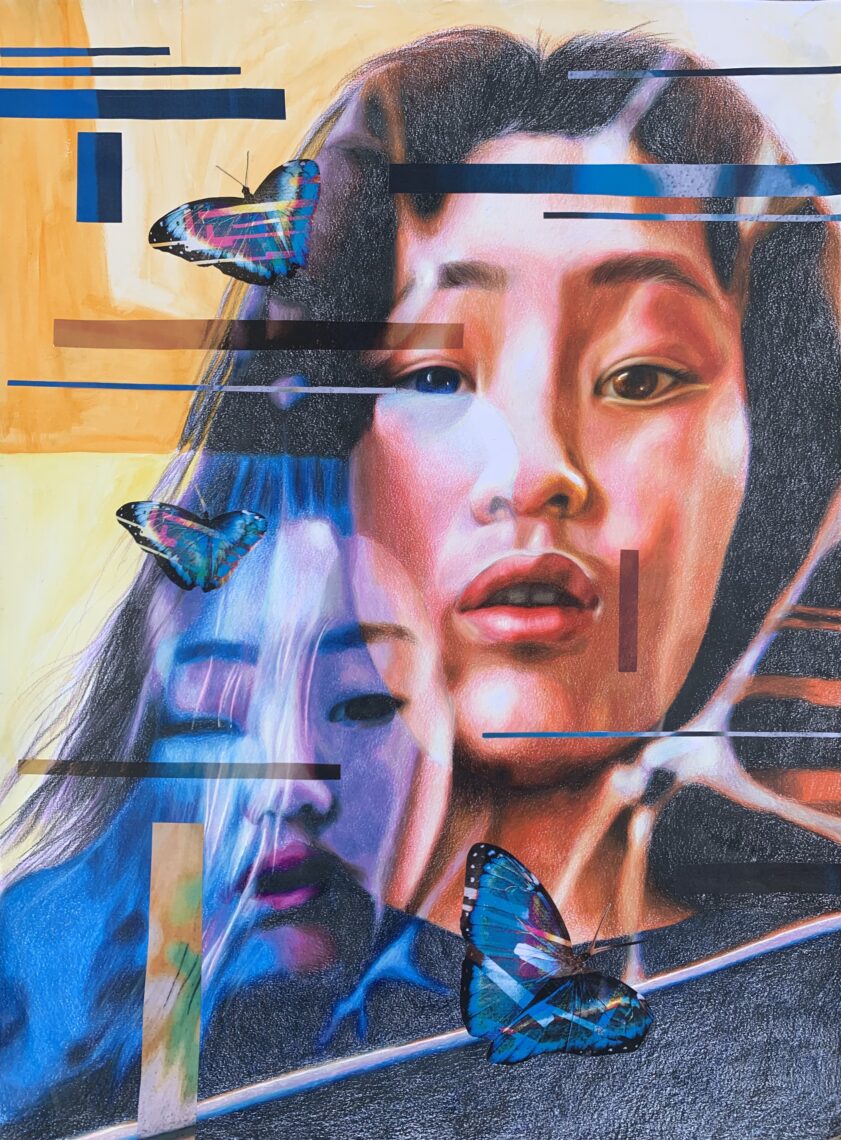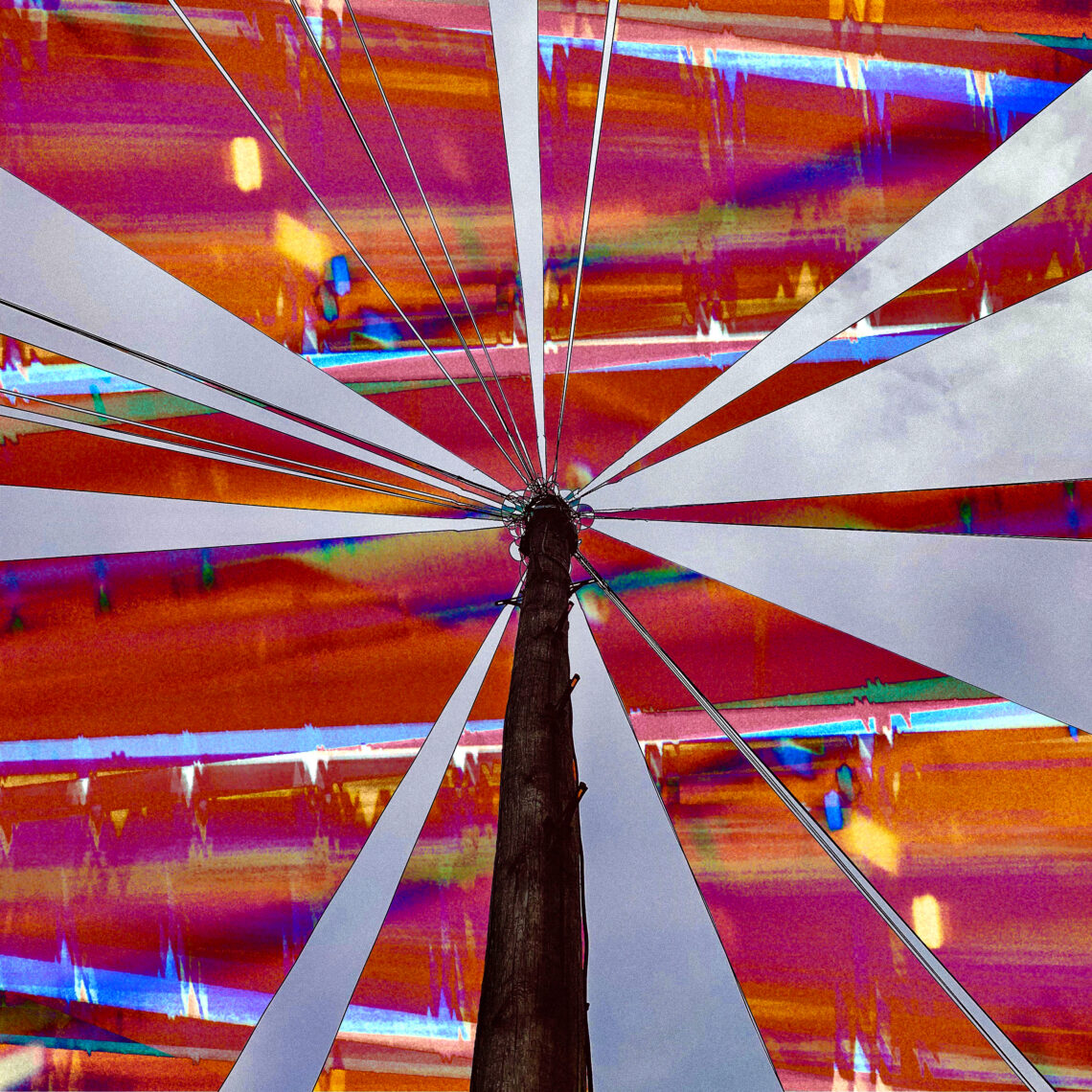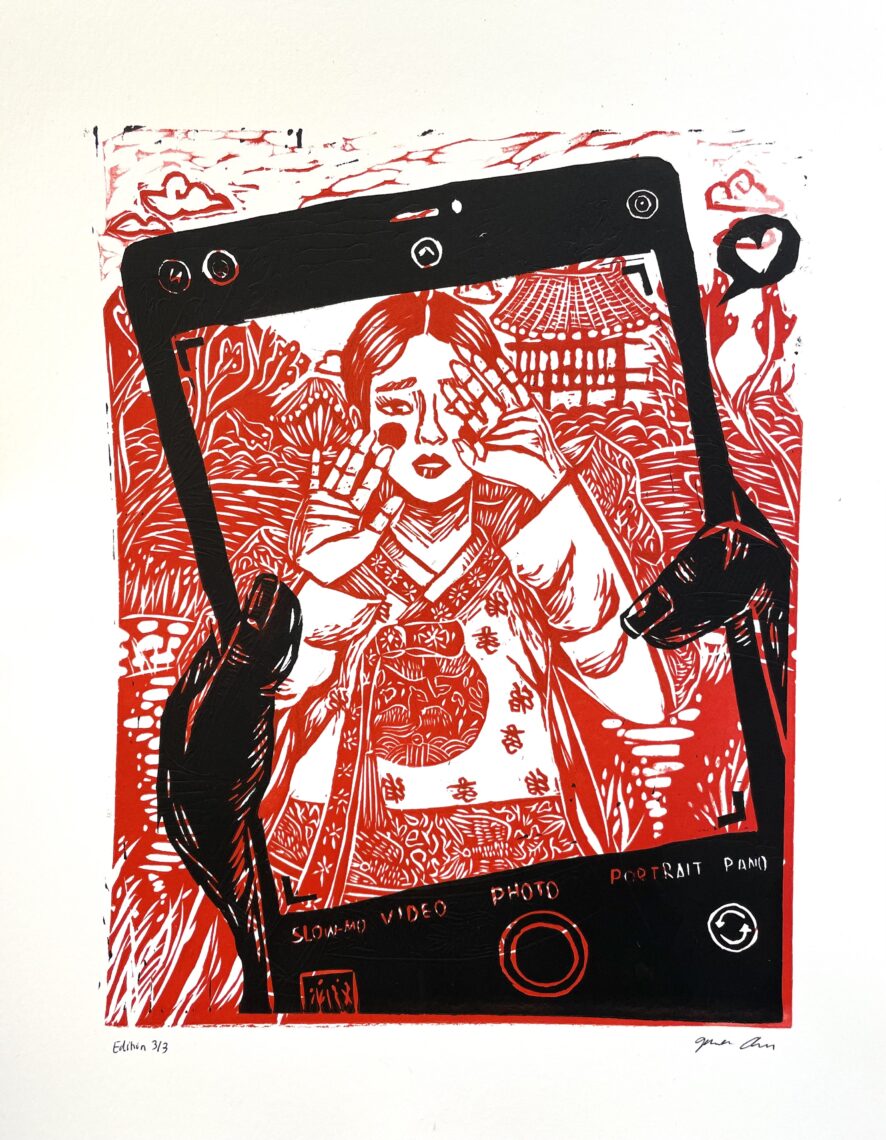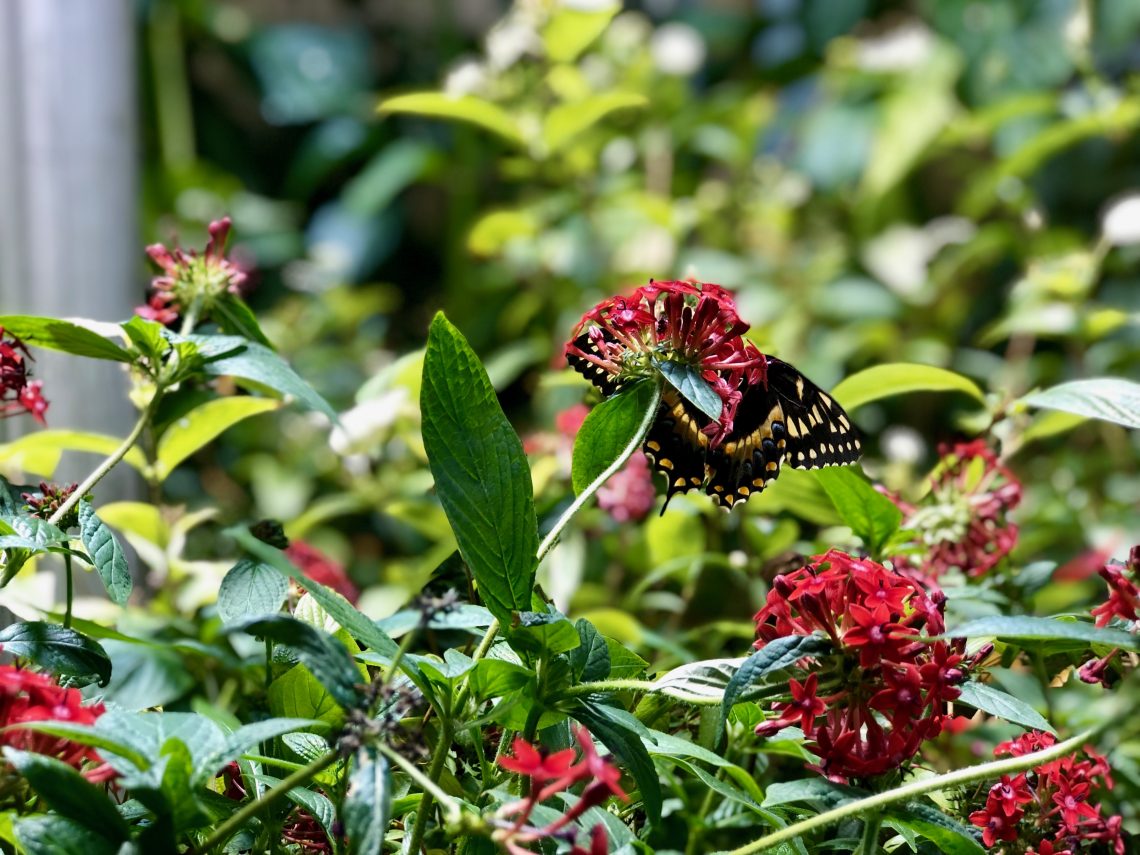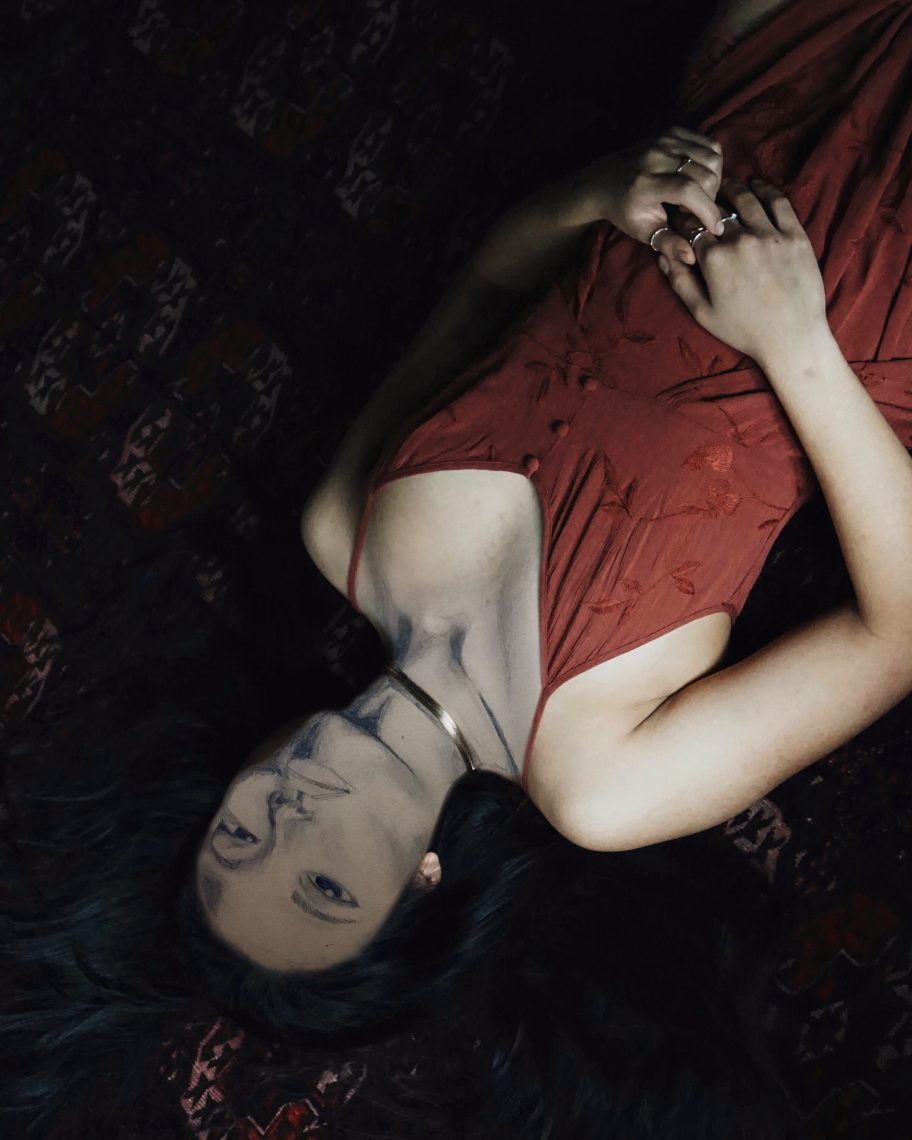-
Anja Ulfeldt's "Lightning Detector" reanimates a miniature tree collected from the Calico Mountains in Nevada. The metal draped over the branches subtly rings tuning forks in a continuously random melody. (Image courtesy Anja Ulfeldt)
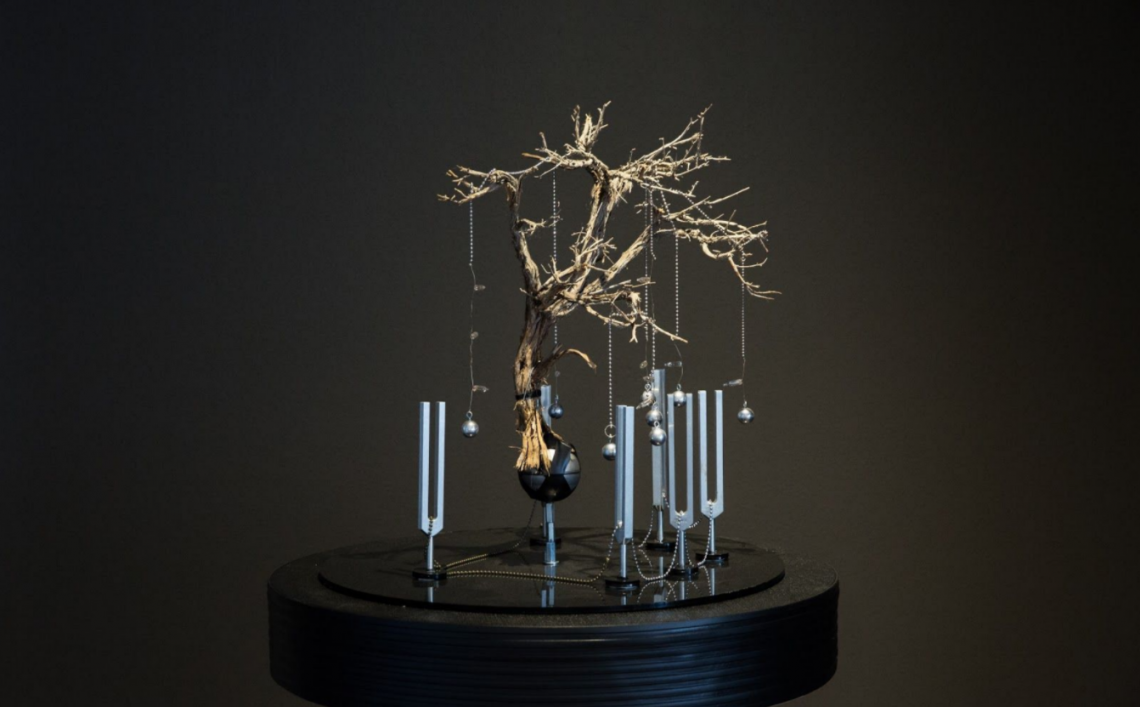
-
Kal Spelletich's "Hand Shakerer" decides when and how often to shake hands and when to let go. (Image courtesy Kal Spelletich)
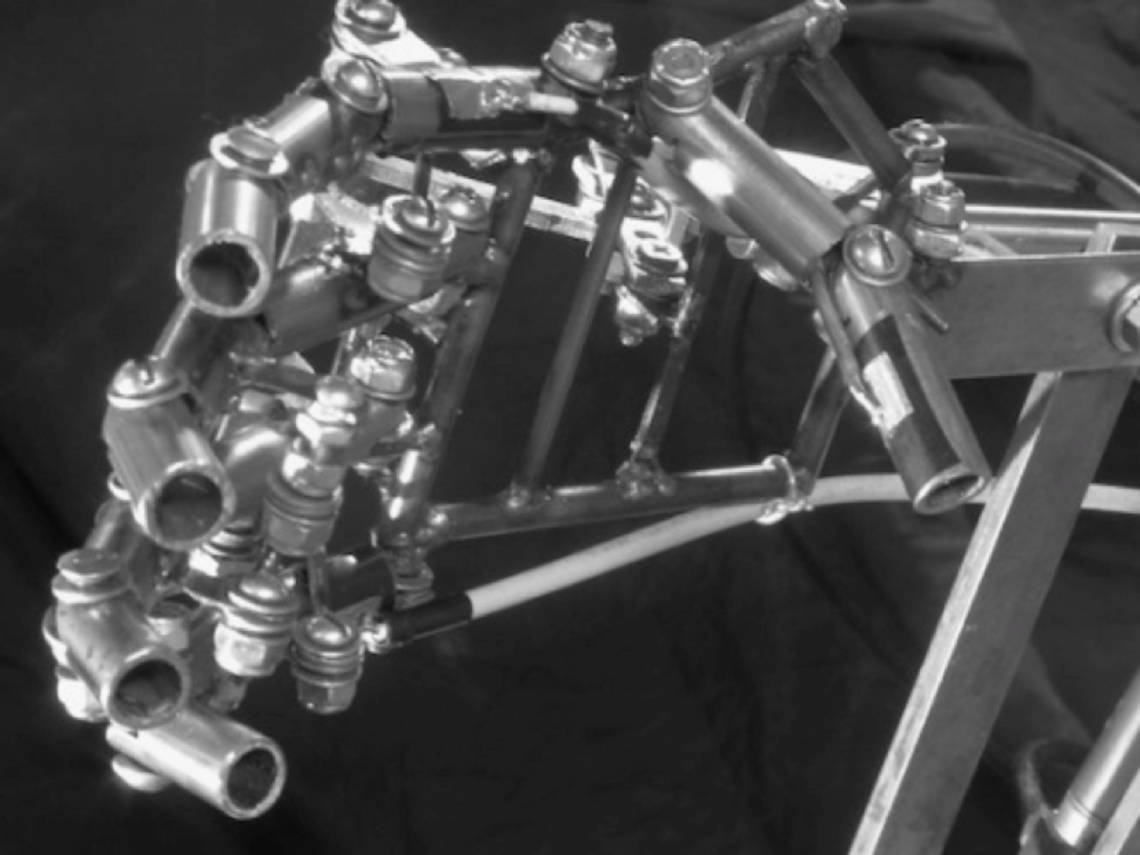
-
Amy Karle's "Feast of Eternity" was created from reality capture, a 3D scan of a human skull, digital design and generative art. (Image courtesy Amy Karle)

Humanity, technology join hands in Life/Art/Science/Tech Festival at SLAC
Part of Stanford's celebration of Frankenstein@200, the fifth LAST Festival brings together artists and scientists for two days of exhibitions and talks that ponder the growing intersections of man and machine.
In the sculpture Feast of Eternity, salt crystals form delicate patterns along a 3D printed lattice that mimics the growth of stem cells to create bone.
The hauntingly beautiful object resembling a human skull was designed by bioartist Amy Karle with the idea of “healing and enhancing a future body.” Karle uses medical technologies in her work and considers how such an object could be directly implanted into the skeleton.
If that sounds a bit Frankensteinian, it’s no coincidence.
The artwork will be one of more than 20 on display during the two-day Life/Art/Science/Tech Festival sponsored by Stanford as a part of a year-long celebration of the 200th anniversary of Mary Shelley’s famous novel. The exhibition and talks by notable scientists exploring artificial intelligence, genetics, robotics and neuroscience will take place at SLAC National Accelerator Laboratory March 23-24.
“Frankenstein@200 presented us with an opportunity to revisit the concept of life,” said Piero Scaruffi, LAST Festival founder and author of books on artificial intelligence and Silicon Valley. “What is life? Can we extend it? Can we fake it? What is life in a virtual world, and how is the life of a machine different from our own?”
This type of intellectual inquiry and interdepartmental collaboration is exactly what the sponsors of Frankenstein@200 hoped to spark, explains Jacqueline Genovese, assistant director of the Medicine & the Muse program in the Stanford University School of Medicine, the main driver of the creative initiative. “We are unique among our peer medical schools in that we are located on campus and thus can create programming, courses and events that encompass everyone from Religious Studies to SLAC, providing opportunities for our students, faculty, staff and greater community to engage with the vital questions presented by Shelley’s novel.”
From doomsday to panacea
The story of humankind is partially a history of the twists and turns of technological innovation, said Joel Slayton, LAST Festival curator and founder of San Jose State University’s CADRE Laboratory for New Media. “This exhibition explores mysterious and unpredictable artistic forms that serve to provoke how we think about the complex relationship between humans and their technology.”
Karle’s work speculates a future where technology can heal and empower human beings.
“We are at a point in our evolution where humanity and technology are merging,” she said. “The desire to enhance the body and find freedom by matching our physical and internal identity is an element of the human condition.”
In contrast, kinetic artist and Burning Man pioneer Kal Spelletich aims to make audiences a little uncomfortable with the future.
Inspired by “elaborate and heartfelt” handshakes he witnessed in Africa years ago, the artist began to wonder if technology could perform personal, emotional acts. One of the resulting works, Hand Shakerer, will give LAST festivalgoers an intimate encounter with anthropomorphized technology.
The robotic hand, equipped with a proximity movement sensor, a touch sensor and an EKG, senses an approaching human, reaches forward and opens up. “If you put your hand inside the robot hand, it reads your bio information and decides whether or not to grip and how firm, if and when to start shaking and when to stop,” Spelletich said.
In the background of the artist’s work is a narrative of “technology run amok,” he said.
“Can robots go even further in areas we consider purely human gestures? The piece honors and criticizes technology at the same time: Is this where we are going? Is this our evolution?” Spelletich asks. “Shake a robot’s hand and see if it can touch your soul.”
The science in art
In 2011, Stanford MFA graduate Anja Ulfeldt made a small thread sculpture and put it in between two metal globes. It “came alive” in the spark gap, she said, “legs” moving.
“That was my moment,” Ulfeldt said. “Since then I have felt like a scientist, trying to reproduce this effect through experimentation.”
Her Lightning Detector sculpture will give viewers a more whimsical Frankenstein moment, by demonstrating how static electricity can animate objects to create a “living” landscape.
Daniel Stefanescu comes to his art via his work as a scientist at SLAC. In addition to managing an experimental station at SLAC’s X-ray laser, he creates interactive displays for the community to better understand science and technology at the lab.
“I’m inventing a holographic display for the LAST exhibition called Progress Accelerated,” he said. “A large flat-screen display with a pyramid on top will provide an interesting, if ephemeral, canvas onto which I relay my artistic interpretation of the relationship between man and his technology.”
Bringing artists and scientists together at the laboratory run by Stanford is a unique opportunity for integration of the fields, according to Scaruffi. “SLAC has layers of history that will resonate for generations if not centuries – the discovery of quarks that gave us physics as we know it today and creation of the first North American website,” he said.
“Today we are humbled by that history, but we also hope to add a new integration between the humanities and the sciences at a time when the public is justifiably disoriented by the tumultuous progress of all sorts of emerging technologies.”
The LAST Festival will also include performances by percussionist and media artist Andrew Blanton, and Rob Hamilton and Chris Platz of Stanford’s Center for Computer Research in Music and Acoustics (CCRMA).
Sponsored by Medicine & the Muse, Stanford Continuing Studies, Stanford Arts and others, the festival is open to the public and admission is free. Eventbrite registration is available on the LAST Festival website.






